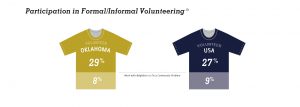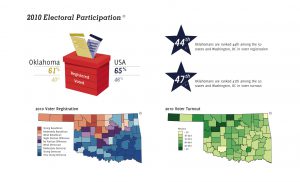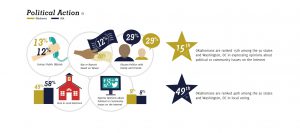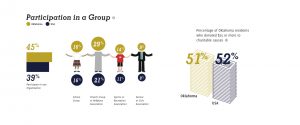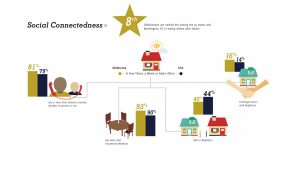Here are a few interesting statistics provided by the Oklahoma State Election Board via email. To view the complete press release click here. Be sure to sign up for their email subscriptions if you want to get fun information like this or reminders for upcoming elections and meeting times for various committees and departments sent directly to your inbox. You can also follow the Oklahoma State Election Board on twitter and on facebook. For more information visit their website at ok.gov/elections/ and for more voter registration statistics visit their voter registration report page.
“Oklahoma’s registered voters:
JAN. 15, 2020 JAN. 15, 2018
DEMOCRATS 738,256….35.3% 769,772….38.2%
REPUBLICANS 1,008,569….48.3% 942,621….46.7%
LIBERTARIANS 11,171….less than 1% 4,897….less than 1%
INDEPENDENTS 332,111….15.9% 298,867….14.8%
TOTAL 2,090,107 2,016,157
HISTORICAL VOTER REGISTRATION IN OKLAHOMA
The State Election Board began recording statewide voter registration statistics by party in 1960.
YEAR DEM REP IND OTHER
1960 82.0% 17.6% 0.4% N/A
1980 75.8% 22.8% 1.4% N/A
2000* 56.7% 35.0% 8.3% *
2020* 35.3% 48.2% 15.8% *
*Minor parties account for less than 1 percent of voters in Oklahoma.
View voter registration statistics at: elections.ok.gov. Audio is available at: https://www.ok.gov/elections/multimedia/Paul%20Ziriax%20Jan.%2016,%202020.mp3.
For more information contact Misha Mohr, Public Information Officer, Oklahoma State Election Board, (405) 522-6624 or mmohr@elections.ok.gov.”

